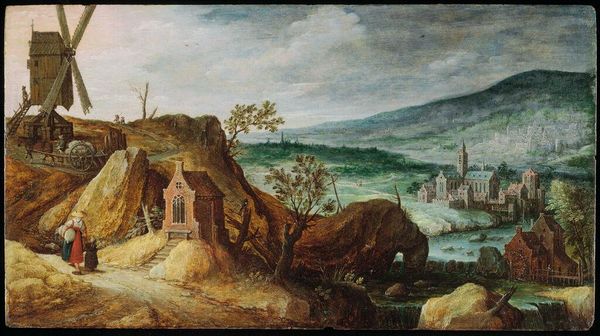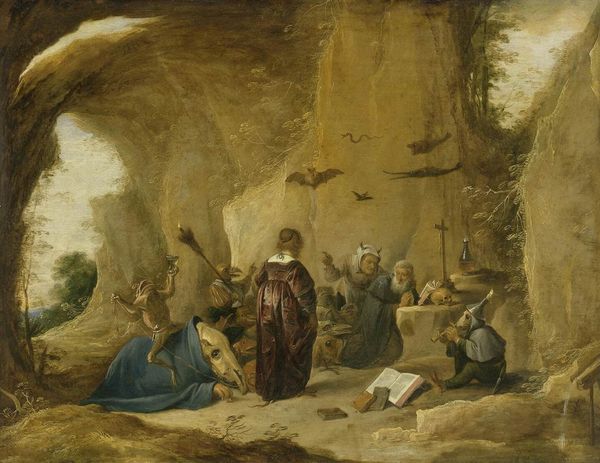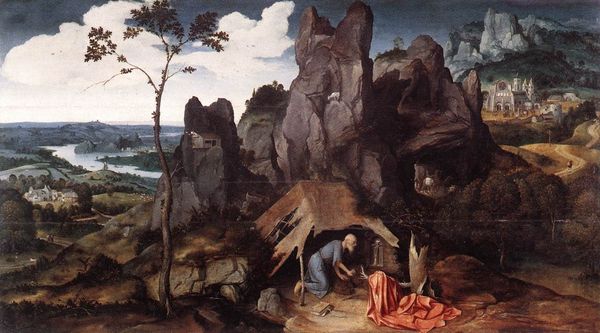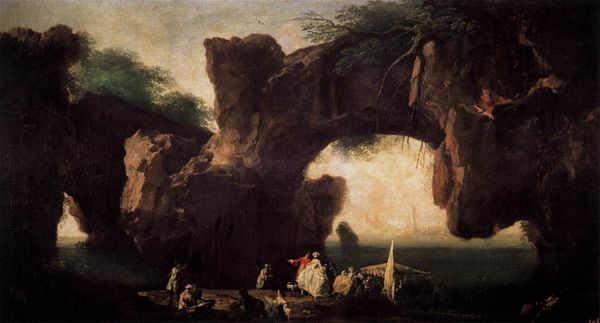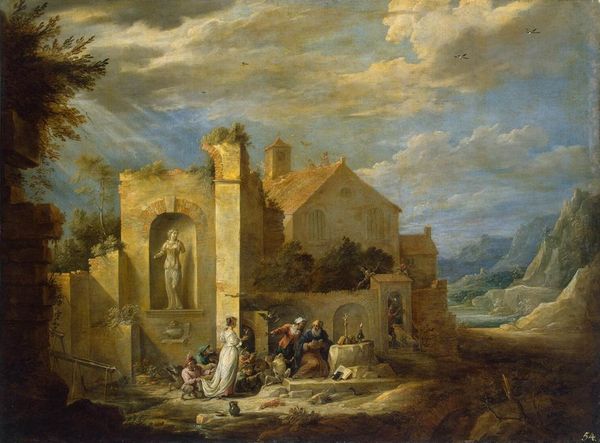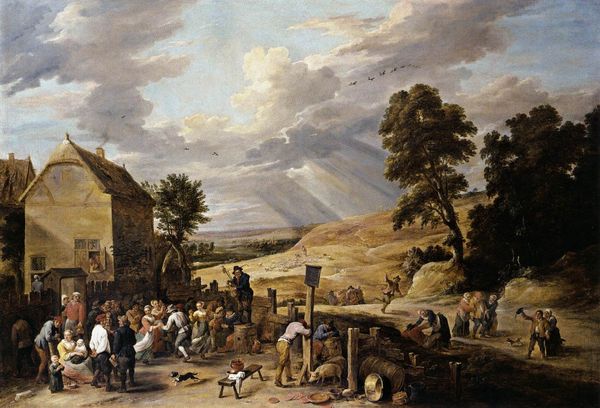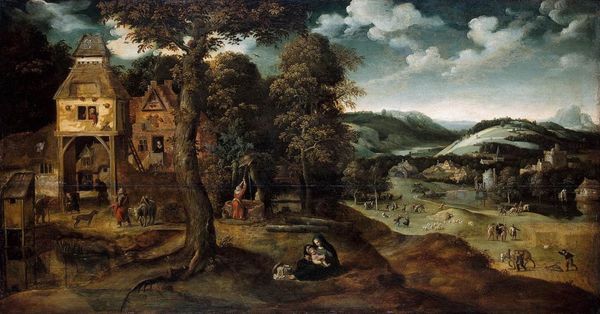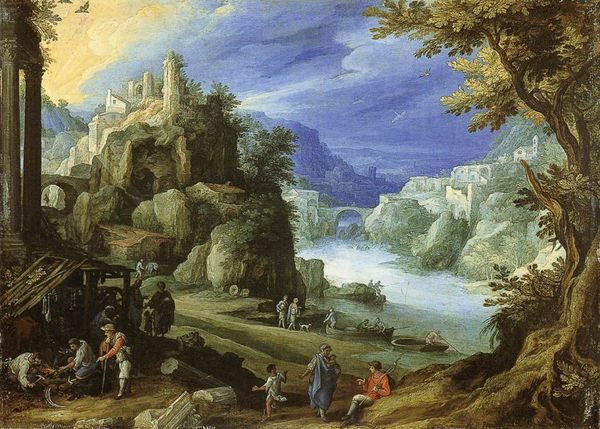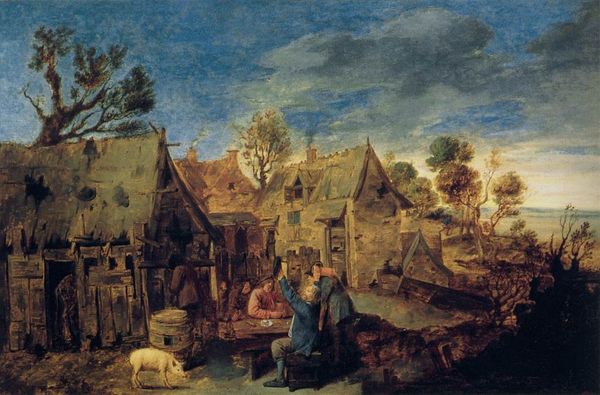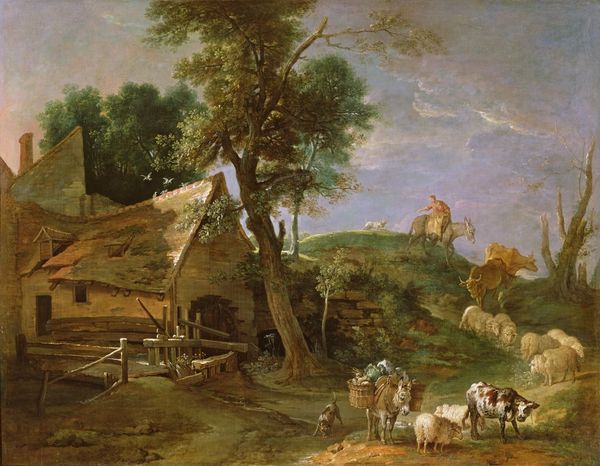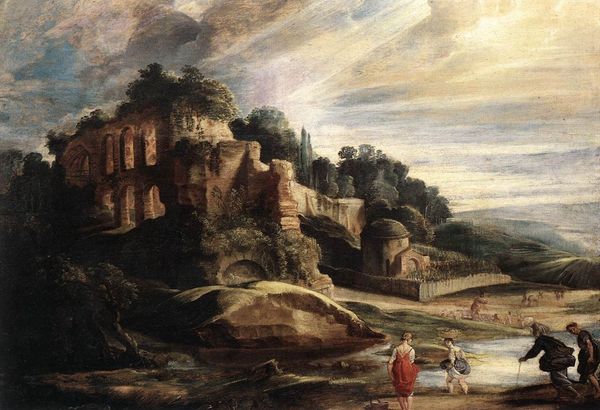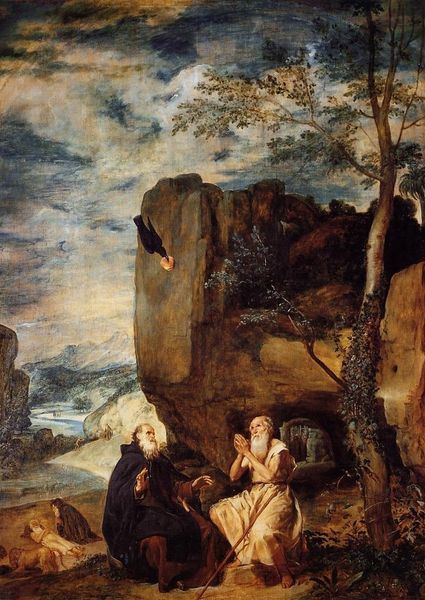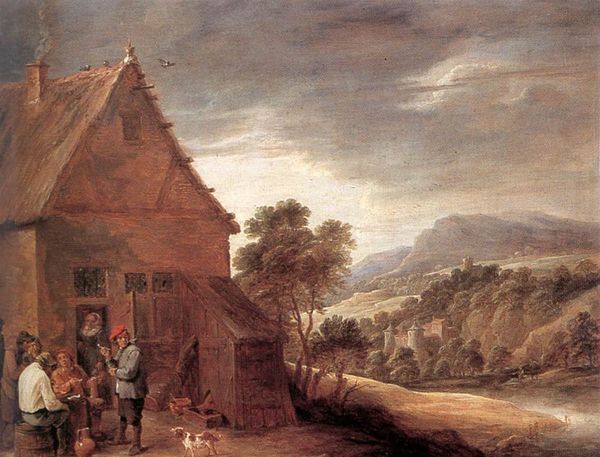
The Temptation of St Anthony 1640
0:00
0:00
davidtenierstheyounger
Wallraf-Richartz Museum, Cologne, Germany
oil-paint
#
baroque
#
oil-paint
#
landscape
#
figuration
#
oil painting
#
christianity
#
painting painterly
#
history-painting
Dimensions: 81.5 x 52.5 cm
Copyright: Public domain
Editor: This is David Teniers the Younger’s oil painting, "The Temptation of St Anthony," created around 1640. The browns and ochres give it such an earthy feeling. It looks like St. Anthony is surrounded in a landscape filled with caves and a flurry of demonic figures. How would you interpret all the symbols within this image? Curator: Notice how the artist nests the temptations not in some abstract hellscape, but within a very real, almost banal, countryside. Teniers uses the familiar, imbuing everyday life with symbolic weight. Think about the Christian symbolism of caves as places of refuge and trial. Are these monsters external threats or projections of the Saint's internal struggles? Editor: So the landscape itself holds meaning, beyond just being scenery? Curator: Precisely. Landscape paintings are rarely just pretty scenery. It serves as a stage. The hut on the left represents St. Anthony’s solitude, his retreat from the world. The demons, rather than grotesque figures of pure evil, are reflections of human desires. Doesn’t that thought echo into contemporary understanding of psychology? Editor: That makes a lot of sense. The temptation isn’t coming from some far-off place; it's all around, maybe even within. But how does it reflect the cultural memory, as we've discussed? Curator: St. Anthony’s story was immensely popular, especially during times of upheaval. He represented steadfast faith amidst chaos. By revisiting his tale, Teniers taps into that well of collective memory. Each era reinterprets these narratives to address their anxieties. What demons do you think a 17th-century audience recognized here? Editor: I guess the demons are specific to time and place. This has given me a new way to approach art: what it says about when, and to whom. Curator: Indeed. Keep looking at the landscapes and the details, the symbols will begin to reveal their cultural context, almost as whispers from the past.
Comments
No comments
Be the first to comment and join the conversation on the ultimate creative platform.
